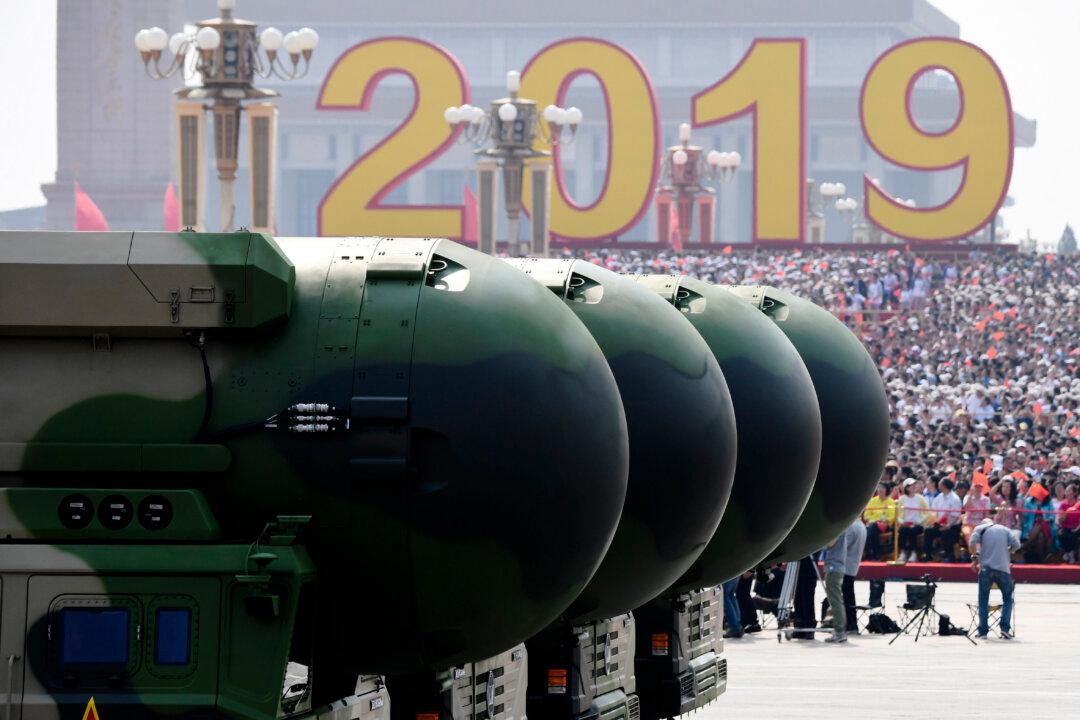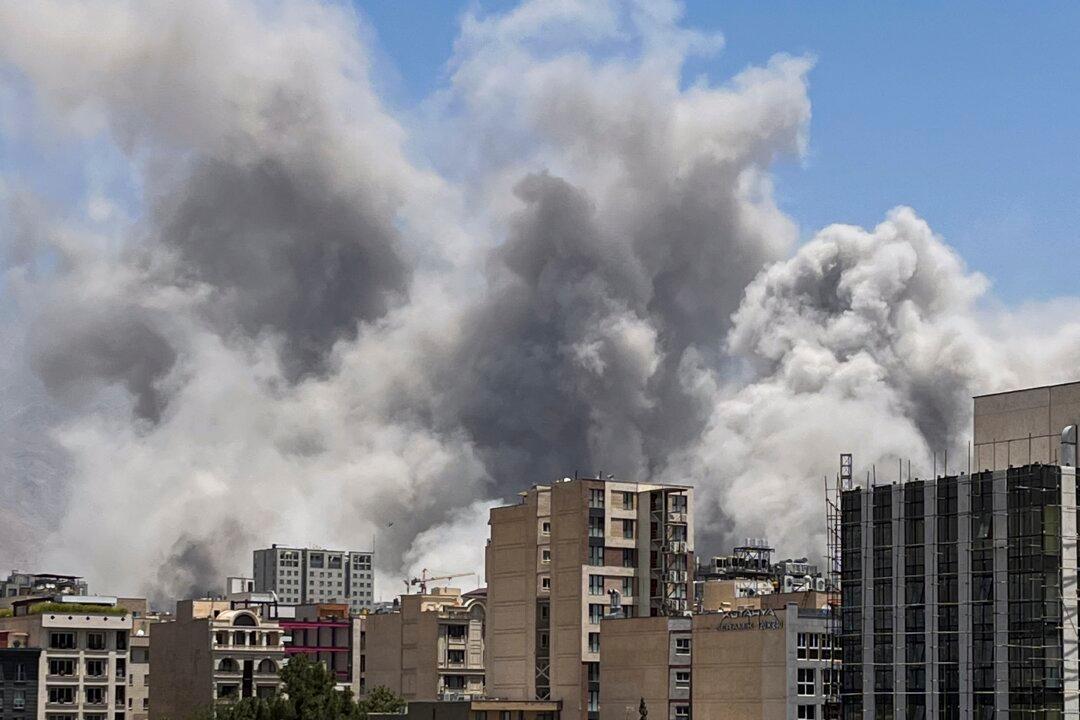NEW YORK—On the morning of May 13, over a thousand yellow-clad men and women gathered in a riverside park opposite Manhattan’s skyline to form three Chinese characters—“Zhen, Shan, Ren”—meaning truthfulness, compassion, and tolerance.
These are the fundamental principles of the Chinese spiritual practice Falun Dafa, commonly known as Falun Gong.
Falun Dafa practitioner Jiang Wei, who headed the effort to organize this year’s character formation event at New York’s Gantry Plaza State Park, said that in terms of scale and quality this effort was the biggest practitioners in the United States have done yet.
Over 1,100 people turned out that morning, some of them well before dawn, to lay down the characters. A month of advance preparations were needed to plan out the affair, including the character layout, which was devised by digital specialists.
“We got up at 3 a.m.,” Jiang told Epoch Times. “This way we were able to get the characters ready before daybreak.”
First taught publicly by Mr. Li Hongzhi in 1992, Falun Dafa is a mind-and-body practice that incorporates meditation with spiritual improvement, known traditionally as cultivation. Li’s teachings are based on ancient Buddhist and Daoist principles.
Yesterday was World Falun Dafa Day, marking 23 years since Li gave his first lecture in Changchun, a city in northeastern China.
Falun Gong practitioners strive to become better people through improving “xinxing,” a term loosely translated as “character” but perhaps better rendered as “heart-nature.” By placing others before themselves and letting go of material and emotional attachments, practitioners of Falun Dafa continue the Daoist tradition of non-intention or the Buddhist creed of giving up worldly desire.
Practitioners from around the world joined New York locals to form the three characters. In addition to Chinese and Taiwanese, there were practitioners from Japan, Korea, Vietnam, Brazil, and other countries.
“It’s my first time in America,” said Weng Chin-mien, a Taiwanese practitioner. Though character and image formations created by practitioners in her country are larger and involve greater complexity, Weng was nonetheless impressed by the scale and international nature of the effort at the riverside park.
“This was a big undertaking for us,” Jiang Wei said.
The character formation was the latest in a long line of such endeavors, first started in China, then moved overseas. A smaller event at Gantry Plaza State Park was held last year, displaying the characters “Zheng Fa,” or “Righteous Dharma.” Dharma is an ancient Indian word given in Chinese as “Fa,” which literally means “Law, or Way.” “Fa” is how practitioners refer to the principles taught in Falun Dafa.
By 1999, Falun Dafa had attracted 70 million Chinese, according to estimates by Chinese officials. According to Falun Gong sources, over 100 million had taken up the practice in China.
Though Falun Gong can no longer be freely practiced in mainland China, it has been welcome in over a hundred countries. This includes Taiwan, where hundreds of thousands practice Falun Gong.
In Taiwan, character formations are often attended by many thousands, and are held at the National Chiang Kai-shek Memorial Hall in Taipei, the capital of the Republic of China, as Taiwan is officially known.

Falun Dafa practitioners believe that truthfulness, compassion, and tolerance are the principles that underlie all of existence. By forming these characters, they said they help create an atmosphere of serenity and compassion, benefiting all.
Prior to being persecuted by the Chinese regime in July 1999, practitioners in China held their own formations, including events in Wuhan, central China, and Leshan of Sichuan Province, according to Minghui, a website run by Falun Dafa practitioners.
Formations consisting of up to 10,000 people displayed in multiple colors the emblem of Falun Dafa. Known as “Falun,” or Chinese for “Law Wheel,” it includes the Buddhist srivatsa or swastikam symbol and the Daoist yin and yang symbol.

Starting 1996, formations in Wuhan were held every year at different public locations until the persecution began.
According to a Minghui report about the Wuhan formations, a colonel in the People’s Liberation Army was impressed by the practitioners’ efficiency and cooperation.
“If we form things like this in the army, it'll take us at least a few months,” he said.



